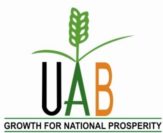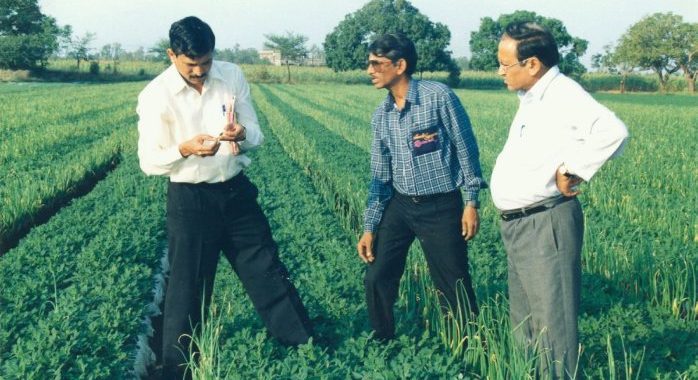by Dr. M. S. Basu
Application of polythene mulch technology (linkedin.com/pulse/polythene) in post-rainy groundnut cultivation targeting potato/toria fallows in low temperature areas of northern states; rice-fallow residual moisture situations in eastern and north-eastern states and irrigated system in southern and central states demonstrated its potential in doubling groundnut yields in India. Intercropping, the concurrent cultivation of two compatible crop species, in a given row proportion, common among dryland farmers is primarily to stabilize overall production per unit area on the event of loss of yield in main crop due to abiotic stress factors. Intercropping is also practiced to minimize biotic stresses following the principles of trap-crop to keep main crop relatively free from sucking pests, semiloopers, etc. and as barrier crop to arrest spores of foliar fungal diseases carried by wind namely rust and leaf-spots falling directly on leaves and infecting plants.
Cultivation of groundnut following polythene mulch technology and introduction of Onion and Garlic as intercrop as shown in the field photograph could be a novel practice to capture the following benefits.
- Root exudates of garlic and onion inhibits soil bacterial and fungal growth that includes root-knot nematodes and thereby improve yield and quality of produce.
- It acts as repellent (allicin and related substances) to sucking pests namely aphids, jassids and thrips common in groundnut and some species are known to transmit diseases of economic importance like Peanut Bud Necrosis and Peanut Clump, Peanut Mottle Viruses.
- Evidence of increased soil urease, soil polyphenol and soil catalase activities under intercropping system as compared to monocrop/sole crop.
- Rotation of garlic with groundnut reduces the risk of contamination of aflatoxin, the most potent hepatocarcinogen to a significant level.
- The impact of onion, garlic intercropping continue to exists in the subsequent crop seasons and finally
- Higher monetary returns per unit area on the total production of main crop plusintercrop
Intercropping of onion with groundnut irrespective of raised-bed or flat-bed system of cultivation should be promoted as a policy assisting groundnut farmers realizing better price on account of quality besides harvesting onion in sizable quantity meeting household requirements.
A smart way to check the ‘onion-tears’ of millions of urban consumers on the event of disparity in demand-supply gap.
Originally published here on December, 31st 2015

